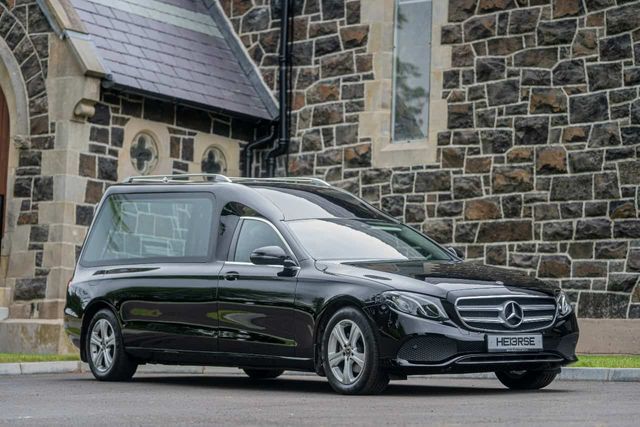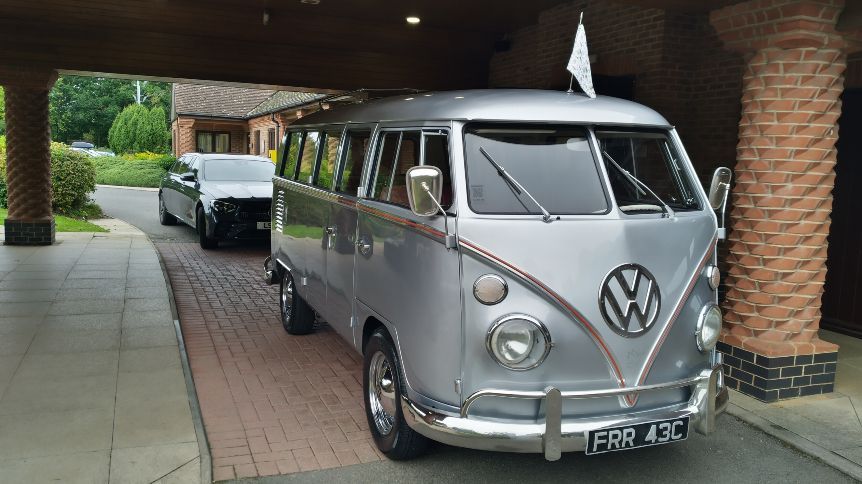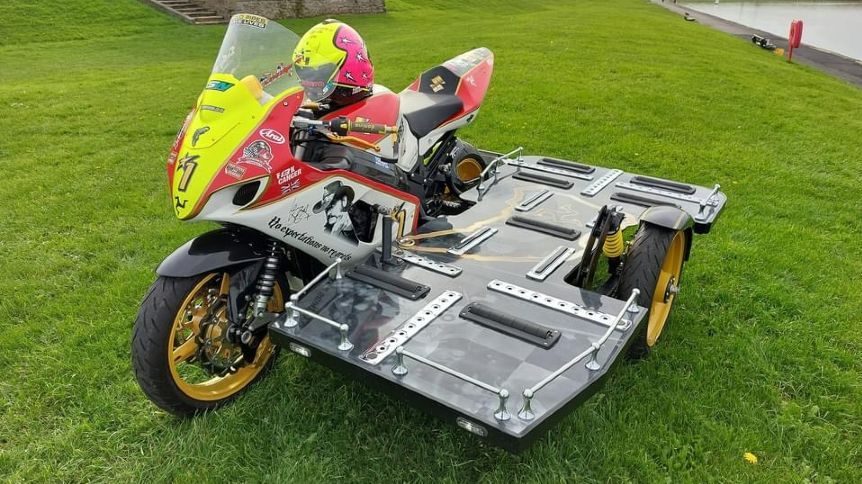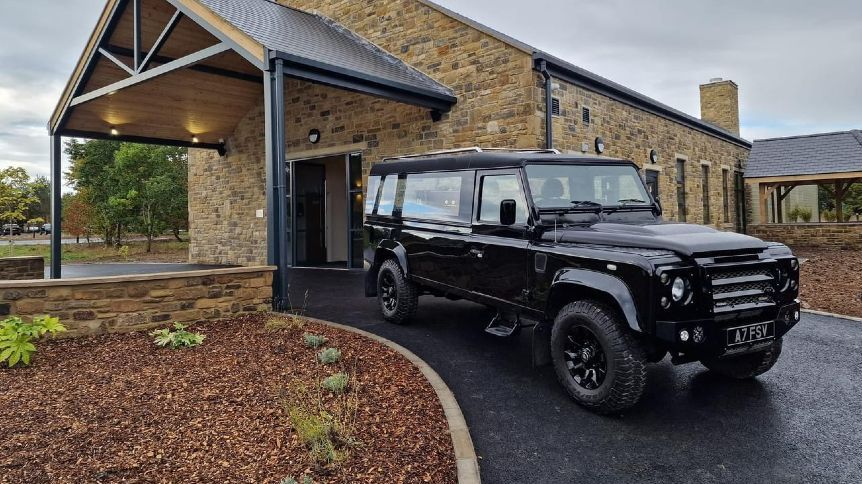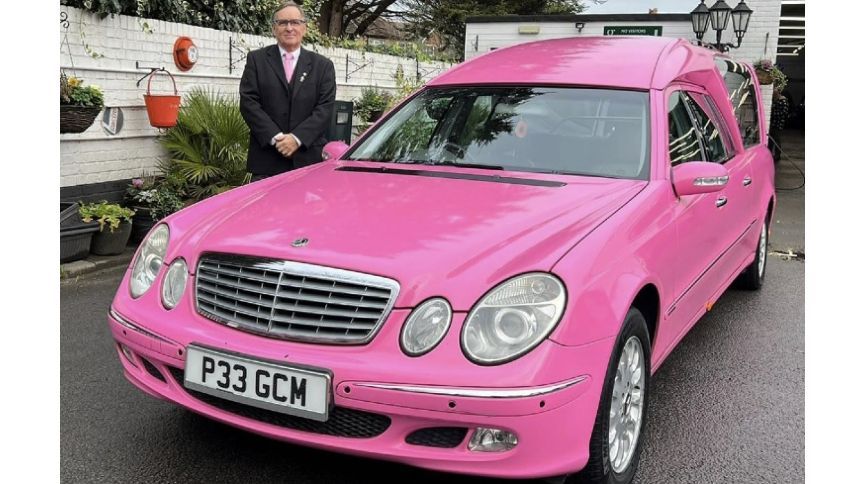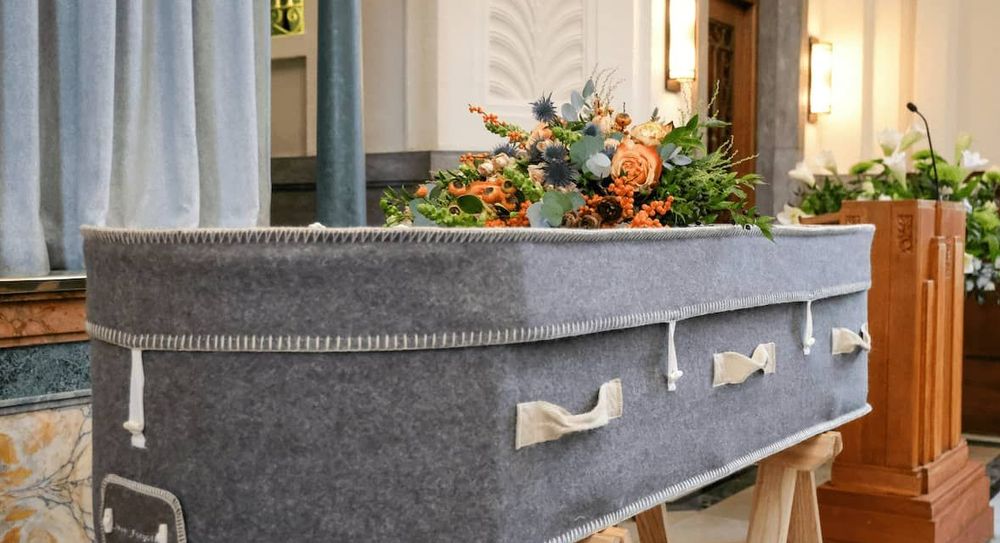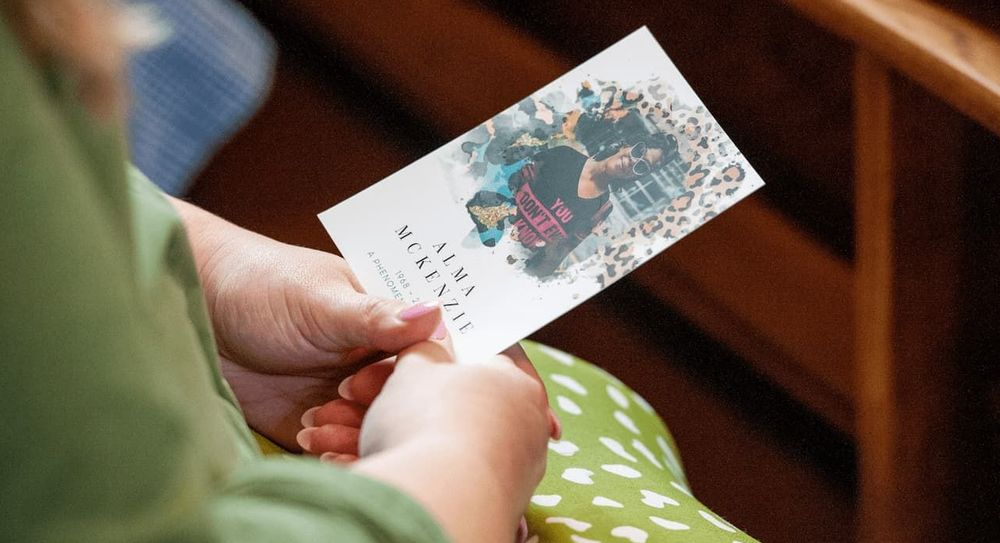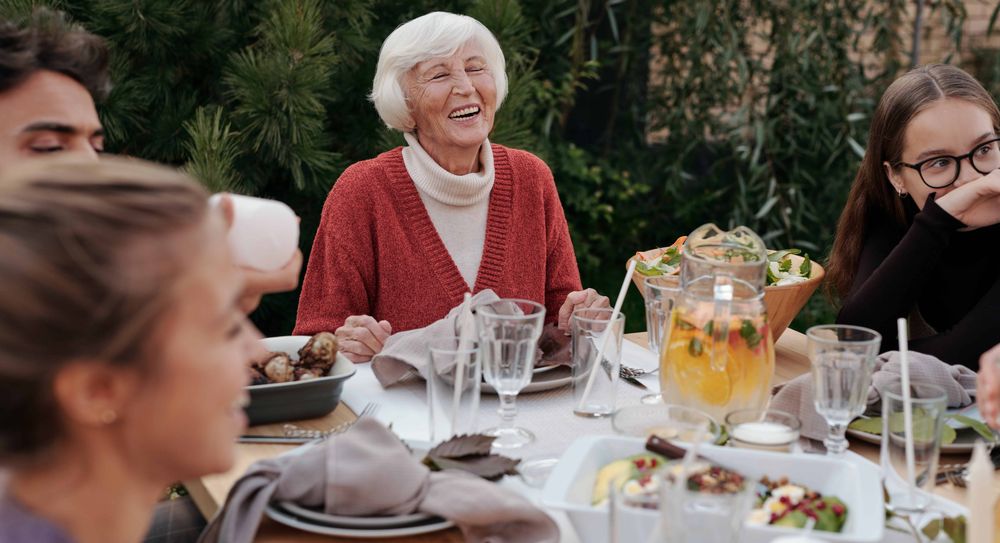Here’s everything you need to know about funeral cars, including the different types available, how to choose one that’s right for you and answers to common questions about hearses and funeral limousines.
Choosing a funeral car: what are your options?
Here are a few ideas, from the traditional funeral hearse and limousines to the alternative and completely bespoke.
Hearse and limousines
Lots of people choose a modern funeral hearse and limousines when they’re planning a funeral. They’re usually black cars supplied by funeral directors or third party providers and often included as part of a standard funeral package. The funeral hearse typically carries the coffin so the back half of the car is longer and taller than a standard car and this section of the car traditionally features clear windows so that any flower arrangements or decorations can be seen. More and more funeral directors are offering electric hearses and limousines too, so if you want to plan a greener funeral, this is something to ask your funeral director.
The hearse typically leads the procession of funeral cars to the service. This can be limousines or larger cars for family members and other mourners may choose to follow behind in their own cars. Even though black limousines are traditionally used you don’t have to have them. You can hire something different so that it’s more representative of your loved one’s interests or personality. We’ll talk more about alternative hearses and funeral cars below.
Horse-drawn hearse
Traditional horse-drawn carriages can still be used as a funeral hearse. The carriage sometimes has glass sides so that the coffin and floral displays are visible. And you can also adapt the sashes the horses wear and the feathers that are placed on their heads. Some people choose the colours of their flag to represent where they’re from, some people to choose their football team colours – it can add a personal touch to the horse-drawn hearse. Just keep in mind that they’re likely to cost a lot more than modern funeral cars. But if it’s an important part of the funeral you’re planning speak to your funeral director about it. They’ll know who’s best to contact to organise this for you.
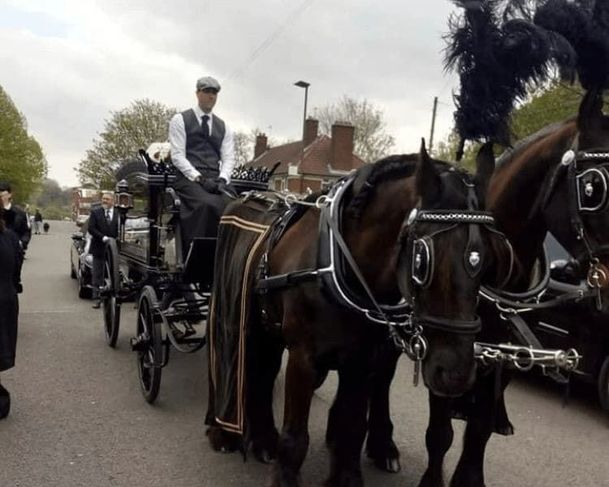
"Every traffic jam let us through quickly. I’m not sure if it’s because it was a horse and carriage but there were a lot of people taking their hats off and bowing their heads as we went past."
Motorcycle hearse
If your loved one was a motorcycle fan then you could have an adapted one as a hearse for their funeral. Specialist carriage masters have been known to provide these types of motorcycle hearses for bikers who specifically requested it so that their friends and family can follow on their own motorbikes.
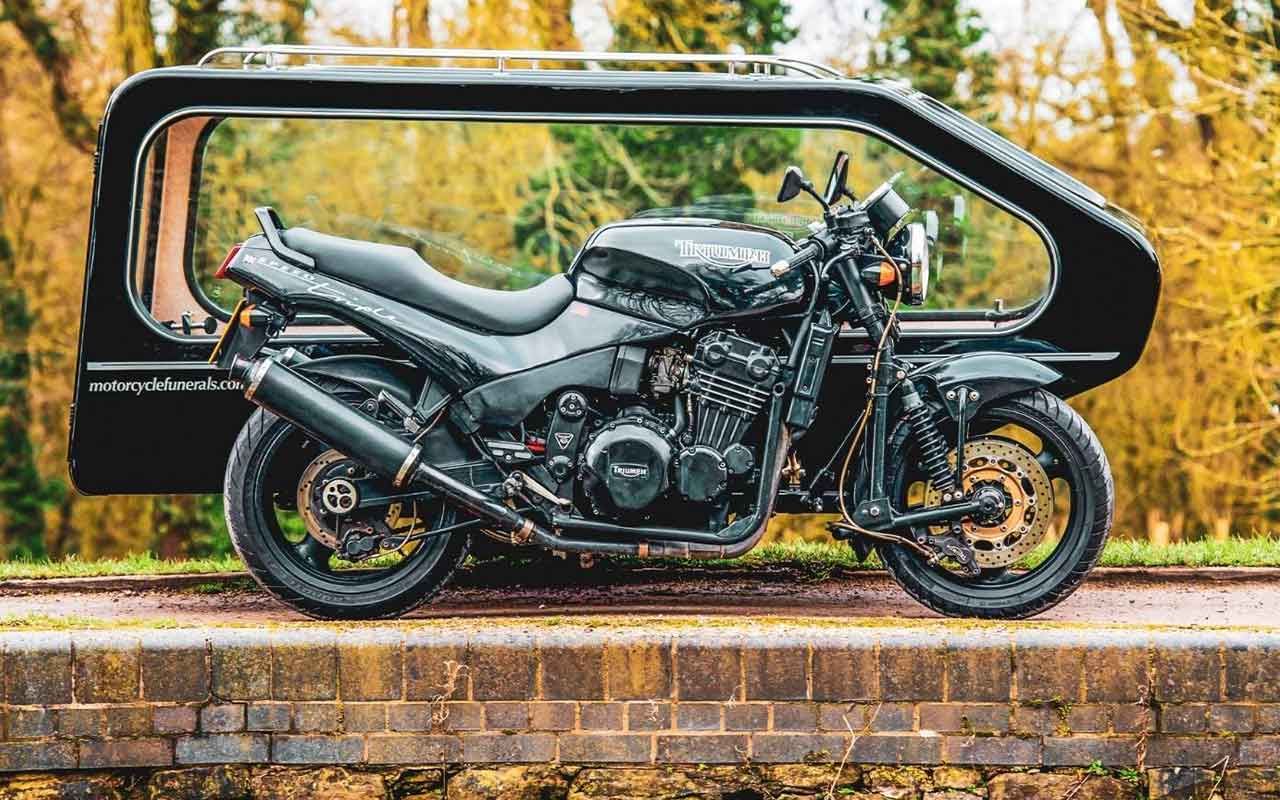
Photo by Motorcycle Funerals
Handcarts
Handcarts are often used in green funeral services. This is a type of eco-friendly funeral where biodegradable coffins are used, and no headstones are used so that the wildlife is not disturbed, and the soil isn’t polluted. Handcarts made from natural materials are sometimes used in this type of funeral especially as natural burial grounds are often rougher landscapes so the coffin will need to be carried to the burial plot by hand anyway.
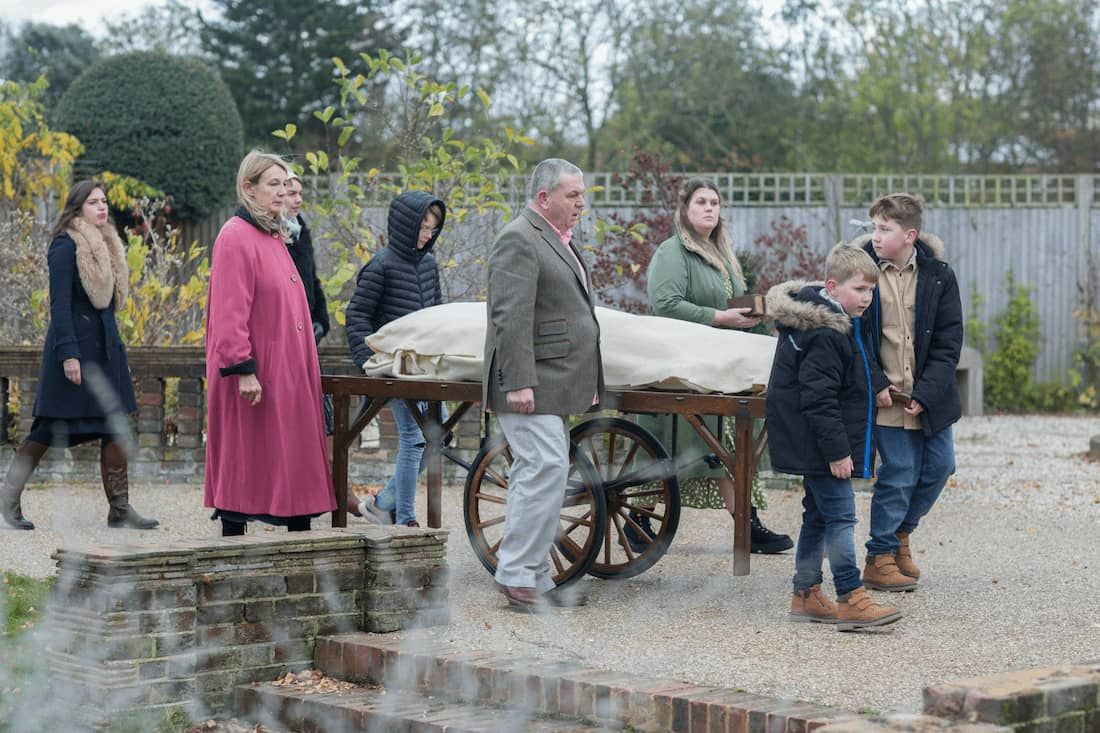
Photo by The Good Funeral Guide on Unsplash.
Alternative hearses
If you’re looking for funeral vehicles that more closely reflect the personality of the person who’s passed away the options really are endless. You could have funeral cars in their favourite colour, or a completely different type of vehicle like a campervan. You could even choose a theme that they would have loved. For example, there’s a specialist provider in the UK that offers a hearse that looks like Del Boy’s Reliant Regal from Only Fools and Horses. The options really are limitless.
What if a funeral hearse or limousines don’t feel right?
If traditional funeral cars don’t feel right for the funeral you’re planning or your loved one didn’t want a lot of fuss – you don’t have to have limousines or a hearse. And you don’t have to have a procession to the venue either. Instead, ask your funeral director to take the coffin directly to the funeral venue before everyone arrives. This may also help you to keep costs down if you need to stick to a budget.
Funeral car FAQs
We’ve answered your questions below about funeral car facts, costs, and funeral car etiquette (how to act around a funeral car procession):
What is a funeral car called?
A funeral car is called a hearse. This is the car that carries the person that’s died in their coffin to the funeral service, and to either a burial ground or crematorium. Hearses are usually adapted black cars that have longer bodies so that the coffin fits behind the driver and can be carefully transported to the funeral venue.
Even though funeral hearses are usually modern vehicles, sometimes horse drawn carriages are used too. In fact, there are lots of different vehicles that can be used as hearses and to transport the coffin. It just depends on your preference and if you want to personalise the funeral procession.
Why is a funeral car called a hearse?
The word hearse comes from the Anglo-Norman French, herce, which means harrow. A harrow is a type of plough that’s used to rake farming ground to remove weeds and large clods of mud before seeds are sown. The original wooden hearses resembled the harrow, so they were named after them. The word later changed to become herse, then hearse.
What is a line of funeral cars called?
A line of funeral cars is called a funeral procession or cortège. This is a traditional procession of funeral vehicles that follow the hearse carrying the coffin from the funeral home to the funeral venue. The hearse leads the procession and is usually slowly followed by friends and family in funeral limousines and other cars.
Who walks in front of a funeral car?
Sometimes the funeral director will lead the procession on foot in front of the hearse. This is called paiging away. They might do this briefly before getting into the hearse to go to the funeral venue. On arrival at the venue the funeral director might lead on foot again for a short distance until the procession comes to a stop. It’s a mark of respect to the person who’s died and comes from traditional funeral ceremonies when the majority of processions involved horse-drawn hearses.
How much is a funeral car?
Funeral car hire prices can be provided by the funeral director and each one will have slightly different packages to choose from. So costs vary. But to give you a rough idea of funeral car costs, the latest research (SunLife report 2024) says that the average cost to hire a limo is £402. This was up by 13.9% in 2023 compared to the cost in 2022.
The best thing to do is compare funeral directors near you so that you can get a clear picture of what each one charges for hearses and limousines. This will help you decide which package is right for you and which one has the best options for funeral cars.
How many people fit in a funeral car?
This depends on which type of vehicle you choose to have as part of the funeral procession. If you choose to have traditional funeral limousines, there are usually 6-9 seats for family members or friends. A stretch limousine will fit a lot more people, potentially up to 20. But if you choose not to have traditional limousines for the funeral then this will vary.
How many funeral cars can you have?
This is up to you. Of course, your budget may come into play. But you can decide what’s right for the funeral you’re planning. That may look like a traditional funeral hearse and limousines or it might mean a procession of classic American cars.
Do funeral cars take you back home?
This depends on the type of funeral package you choose and whether you’d like to pay for the funeral cars to take you home after the funeral. Usually, funeral directors will only include transport in funeral cars to the funeral venue and the burial ground or crematorium. They may charge extra for transport home. So make sure you discuss this with your funeral director in advance. You might want to think about alternative transport home from the service or the wake and how this will work as part of your budget.
Who goes in the funeral cars?
According to traditional funeral car etiquette the closest family members will go in the first limousine behind the hearse. This is usually partners or spouses, along with children and parents. Other family members and in-laws will then follow behind in a second limousine or car. But this isn’t set in stone. If the person who passed away had a friend that they would’ve like to have close by, there’s no reason why they can’t go in the first limousine or car too. It’s really up to you when it comes to deciding who goes in the funeral cars.
Why do funeral cars drive slowly?
The slow procession of the hearse and the other funeral cars behind it is a sign of respect to the person who’s passed away. It’s also comes from the slow march of traditional funeral processions that used to happen on foot. From a practical point of view it also makes it easier for all the cars following the hearse and limousines not to get separated from the procession.
Can funeral cars run red lights in the UK?
No, funeral cars can’t go through red lights. They must follow all the usual road traffic laws and regulations.
Can you overtake a funeral car?
Funeral cars need to follow the usual road traffic regulations just like us so you should only overtake a funeral car if it’s safe to do so. Overtaking on a dual carriageway would be the best option so that you don’t disturb the procession. Remember to be considerate of the situation too. If you can, let the funeral cars pass. And turn down your music slightly.
What should you do when a hearse passes you?
There are no strict rules and regulations about how you should act when you see a hearse passing by in processions. But some people who are walking by like to stop and remove their hat if they’re wearing one, or bow their head as a sign of respect for the person who’s died and their friends and family travelling to the funeral.
Header image by Patrick Quinn on Unsplash.

